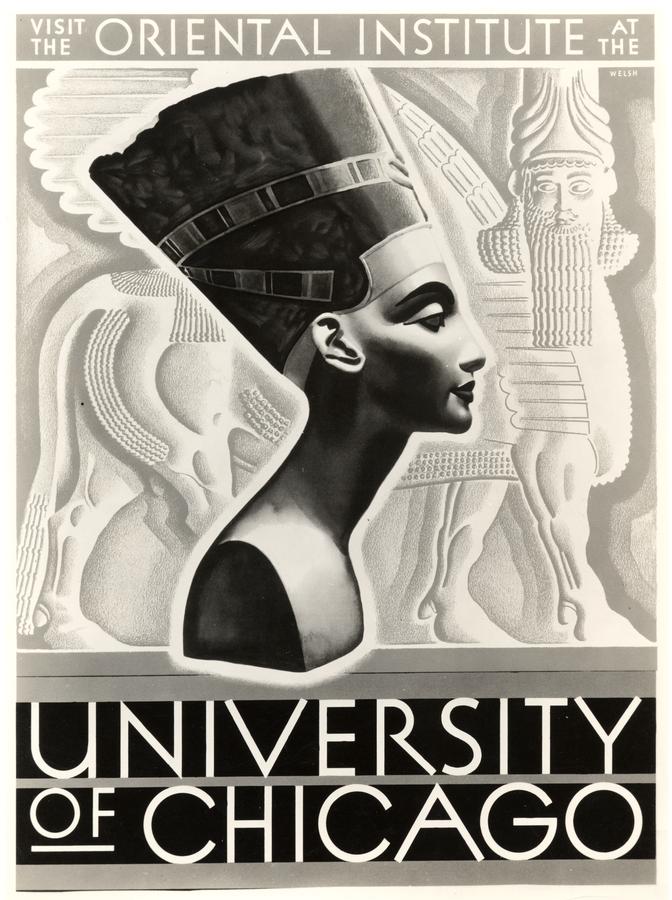Helen Jacquet-Gordon in Nubia, Abu Simbel, in front of the stela of Sete I. Photograph by Jean Jacquet, February 1960. Photographic Archives, Chicago House, Luxor.
Helen Jacquet-Gordon at Arminna West, March 1961. Photographic Archives, Chicago House, Luxor.
It is with great sadness that we announce the passing of Helen Jacquet-Gordon, 95, at her home in Carouge, Switzerland, on April 26th. The loss to Egyptology is profound. Helen was a true Renaissance woman who specialized in ancient Egyptian ceramics but was proficient in the language, epigraphy, art, history, and archaeology of ancient Egypt and the Sudan, and was herself an accomplished artist (and musician). She is survived by her husband, archaeological architect Jean Jaccquet.
Born on February 7, 1918 in New York, Helen came to Egypt in 1955 for the purpose of completing her thesis for the École des Hautes Études at the Sorbonne. In 1956 Helen met her life partner Jean Jacquet on the excavations of the University of Pennsylvania at Mit Rahina. For the next 50 years work and pleasure took them all over the Middle East, where they participated in a variety of historic archaeological expeditions: in Egypt and Nubia during the construction of the Aswan High Dam, (“the Nubian Salvage Campaign” from 1957 to 1965); in Lebanon at Tyre (1964 to 1968); and at Tabo in the Dongola province of the northern Sudan (1967-1977). Their main undertaking was in Upper Egypt at North-Karnak, an 18th dynasty site (the Treasury of Thutmosis I) situated just north of the great temple complex. There they conducted excavations from 1968 to 1977 and 1989 to 1992 under the auspices of the Institut français d'archéologie orientale du Caire (IFAO). While working at Karnak they lived in Alexander Varille's historic mud-brick house perched on top of the Karnak northern enclosure wall overlooking the temple of Ptah.
From 1997 until 2007 they resided with the team of the Epigraphic Survey at Chicago House (Oriental Institute, University of Chicago) in Luxor where they continued to work on publications and consult with the Survey. There Helen finished and published her groundbreaking The Graffiti on the Khonsu Temple Roof at Karnak: A Manifestation of Personal Piety, OIP 123 (Chicago 2003), the third volume in the Epigraphic Survey's Khonsu Temple series. She and Jean consulted with the Chicago House team on many aspects of the Survey’s work at Luxor Temple and Medinet Habu, and it was a real joy to have them with us for that decade.
Their photographic archive contains more than 7,400 images (6x6 and 35 mm) of which the greater part is devoted to the architecture, archaeology and epigraphy of the ancient Near East. In 2008, Helen and Jean donated these archives to the library of Chicago House in Luxor, where they form the Jacquet Archive in the Chicago House Photographic Archives.
Helen was an inspiration to all who knew her, and she raised the bar high. 95 years old, yet she published a major pottery double-volume (Karnak-Nord X) just last year, and her book on Tabo is in press now at the IFAO in Cairo. She truly was one of the greats of Egyptology, and will be terribly missed.
Helen’s funeral will be on Thursday, May 2nd. Condolences may be sent to:
Jean Jacquet,
6, Place d’Armes,
1227 Carouge,
Switzerland.
Ray Johnson, director, Epigraphic Survey, Chicago House
.+Nubia.+Abu+Simbel.+Helen+Jacquet+in+front+of+stela+of+Seti+I.+Photo+by+Jean+Jacquet-+February+1960.jpg)







 Stumble It!
Stumble It!

